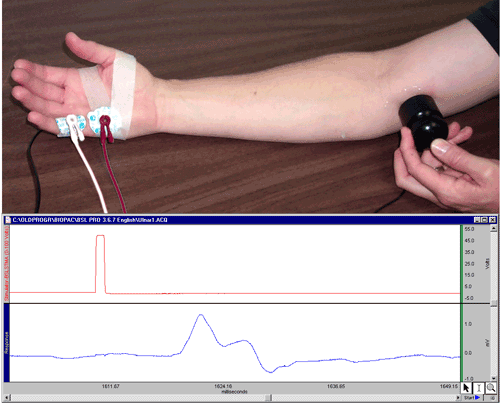H03 Nerve Conduction – MP30

This PRO lesson describes hardware and software setup of the BSL PRO System to record and measure nerve conduction velocity along the ulnar nerve of a human subject.
Experimental Objectives
- To record a charge from the stimulus electrodes to recording electrodes.
- To observe the Threshold, Maximal and Supra-Maximal response levels.
- To determine nerve conduction velocity along the ulnar nerve.
Tasks Performed by the Student
Videos
Biopac Student Lab Student Download
Student Prep & Distance Learning
Click the link(s) below for sample data and/or lesson procedure video(s), BSL PRO Lesson procedures (PDF) for human lessons*, and graph template files (*.gtl) for BSL PRO Lessons. If more than one .gtl is available, download the .gtl with the _suffix to match BSL version and hardware.
Lesson Hardware
This lesson requires a Biopac Student Lab (BSL) System and the following hardware. If your BSL System does not include all hardware items, expand your system by selecting required items below. For more details, review the Lesson: L# BSL Lessons - see the Lab Manual or launch BSL; A# and H# BSL PRO Lessons, click the PDF link above to review full setup, recording, and analysis procedures.
Stay Connected